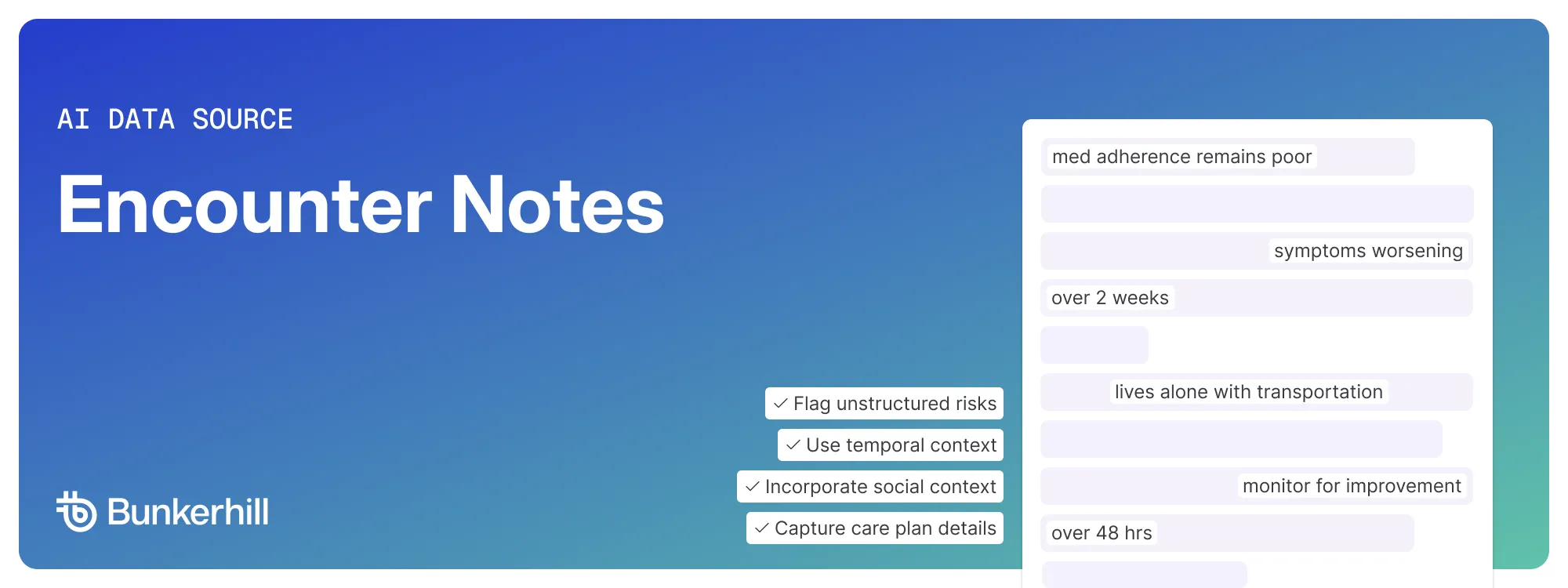Introducing Encounter Notes: Even Deeper Patient Understanding
Today, we’re excited to announce that Carebricks now incorporates encounter notes, unlocking one of the richest and most context-filled sources of patient data available.
Until now, Carebricks has helped health systems identify and act on risks using imaging reports, medication data, conditions, and longitudinal EHR history. With the addition of unstructured provider notes, our platform now sees more, understands more, and can do more.
This launch marks a major step forward in our mission to help health systems deliver smarter, more personalized care at scale.
Why encounter notes matter
If you’ve ever read through a provider note, you know it’s where the real story lives. It’s where clinicians document what they’re seeing, why they’re concerned, what they’re planning next, and what barriers might stand in the way.
Now, Carebricks can extract and act on information that rarely appears in any other data source:
- Unstructured risks — like medication nonadherence or undocumented conditions
- Temporal context — how symptoms are progressing, when they started, or what’s changed
- Care plan details — what the provider actually intended to do, even if no order was placed
- Social context — patient-level barriers that affect whether care plans are followed through
With these new signals, Carebricks develops an even more complete understanding of each patient—enabling systems to tailor interventions more precisely, target the right populations for follow-up, and close more care gaps, automatically.
What's possible now
Encounter notes strengthen every layer of the Carebricks platform:
- Better detection of high-risk patients who might otherwise be missed
- More accurate filtering using clinical nuance that structured data can’t capture
- Smarter actions, grounded in real-world patient context
Whether it’s surfacing a hidden heart failure diagnosis, identifying a patient who’s unlikely to attend a follow-up, or adjusting care recommendations based on what’s already been discussed, Carebricks now reasons across every corner of the chart—even the free text.
What's next
This is just the beginning. Our models are already learning from provider notes across cardiology, oncology, pulmonary, neurology, and more. And as we continue expanding the types of clinical context Carebricks understands, we’re making it even easier for health systems to turn raw EHR data into the next best step for every patient, automatically.
Want to see what this looks like in practice? Reach out to our team or explore our latest deployments.
